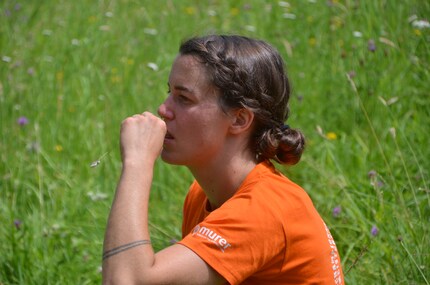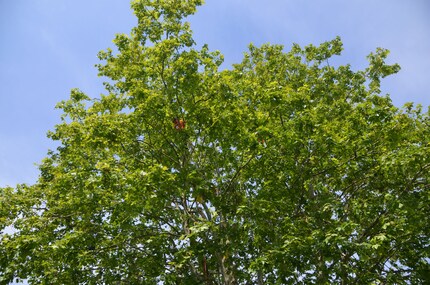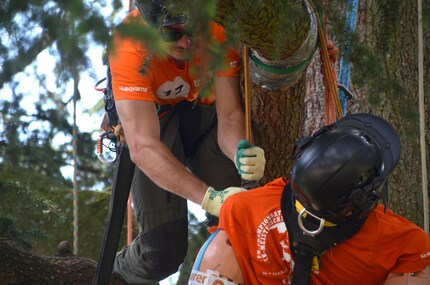
Background information
Hunting season in the Grisons: scouting for clues in the Calanca Valley
by Patrick Bardelli

The sun is blazing down from the sky. There are large, shady trees everywhere. But sitting under them is not on today. Climbing arborists are hanging in the treetops, eager to prove themselves.
I'm on the sports field at the University of Lausanne, right on the shores of Lake Geneva. The organisers of the Swiss Tree Climbing Championships have chosen a beautiful spot. It would be even nicer if I didn't have a three-hour train journey behind me. I would never have thought that sitting around could exhaust me so much. I fill the time with reading, fiddling around on my mobile and taking notes, but the time still barely passes. I feel like moaning, but unfortunately there's no one around to whinge to. Probably better this way. When I arrive in Lausanne, I hop on the metro, walk a few more metres and finally arrive at my destination.
First of all, I have the feeling that I'm the only spectator. Everyone else is either wearing crew, organiser or participant shirts. But it doesn't matter, I'm there for the "sport" and not the trappings. "Sport" because all the participants either work in arboriculture or a related profession, which is why it's actually a professional championship. This is exactly what Louise Groenbaek appreciates about the event. It is not a sporting event, but her daily bread and butter, which takes place under tough conditions. Louise is Danish and only in Switzerland for about five weeks. She is here to meet people from a previous competition and improve her skills. And, of course, to take part in the championships.

The first competition I watch is work climbing. The aim is to complete tasks in the tree in as little time as possible. In most cases, the correct execution is made clear in the form of a bell ringing. It would be a good idea to climb cleanly, otherwise there's a deduction in the B grade. Amongst all the men, I also spot a woman who is about to start. Quite rare in this area. Even today, tree climbing is still firmly in the hands of men. This is also confirmed by Louise, who I unfortunately never see climbing. "I've been to championships in Denmark a few times and was usually the only woman. There are four of us here, which is great!" Sophie, whose turn it is now, has her own tree care business in France and therefore has a lot of experience. Little things go wrong, but all in all it's impressive, at least for me as a layman.

I change the tree, from foliage to needle. The spectators have now multiplied too. Before I see exactly what's going on, I smell the pine. That alone is great. With a better view, I can also see what is required here: Rescue from the tree. A dummy is hanging in the ropes and has to be freed by the participants without further injury. It's exciting to watch and also exciting for the climbers, says Louise at least. "As we hardly ever come into contact with it in everyday life, it's exciting and important to at least be confronted with it here. It makes us think about the situation, put it into practice and be prepared for it in an emergency."

Another discipline that doesn't really occur in real life is speed climbing. As the term suggests, it involves climbing up a tree as quickly as possible and ringing a bell. It's nice to watch as it's quick and you can see into the tree. After a short walk, I get to the rope throwing. This involves throwing a rope from the ground into the tree so that it hangs over a certain branch. I don't stay long, as the entertainment value is limited. So I move on to the last item, the ascent climb. Within a time limit, the participant has to reach a predetermined height on a free-hanging rope. This is also indicated by a bell. As with speed climbing, this is done quite quickly and is therefore exciting to watch. As I'm slightly elevated as a spectator, the view isn't bad either.
After a few hours, I'm already on my way home again. As you may remember, it takes about three hours, so I still have a long way to go. But all in all, it was a successful day. It's nice to see how much the arborists identify with their work. There is no competition. Everyone supports each other and spurs each other on. The atmosphere is relaxed and friendly. At some point, however, I saw the whole thing. As a layman, I can't really see the small but subtle differences, so the climbing interludes seem redundant. Just like the train journey home. It also seems somehow familiar to me ...
My life in a nutshell? On a quest to broaden my horizon. I love discovering and learning new skills and I see a chance to experience something new in everything – be it travelling, reading, cooking, movies or DIY.